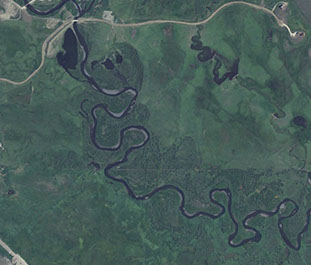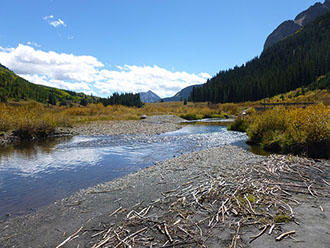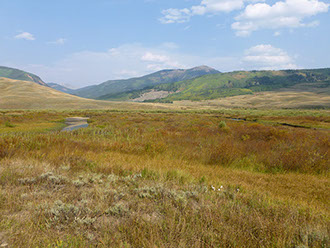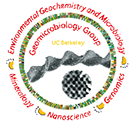East River Catchment in Crested Butte, CO



Building from research at the Rifle site on subsurface biogeochemical processes over meter length scales, the new Berkeley Lab Subsurface Biogeochemistry Watershed Function SFA is being conducted at a headwaters catchment (East River, CO) and aims to develop understanding of biogeochemical processes at the watershed scale.
Microbially-mediated biogeochemical processes that occur at the micron-scale impact watershed function and ecosystem outputs at the tens of kilometers scale. Watershed functioning relies on complex interactions among vegetation, hydrology, topography, and geology that lead to distinct environmental compartments at the surface and in the subsurface. Our work will leverage the genome-resolved metagenomic bioinformatics methods developed through research at the Rifle site, and will focus on three different aspects:
We hypothesize that detailed analysis of meanders, important riparian zone compartments, can generate insights about key biogeochemical processes that can be used to approximate the function of the larger system. Meanders were subdivided into river channel, hyporheic zone, and the surface and subsurface vegetated soils and sediments, whose characteristics reflect past and present river flow dynamics. The objectives are to infer processes that contribute to C and N cycling based on the metabolic potential of the microbial communities and to identify hotspots and hot moments of microbial activity in the riparian zone and their impacts on nutrients cycling in the watershed.
Warming of mountainous watersheds, causing decreased snow cover and earlier snowmelt is expected to reduce overland flow and increase early-season infiltration, is expected to lead to deeper transport of solutes and increased production of CO2 within the vadose zone. As part of the SFA team lead by Dr. Tetsu Tokunaga, we are studying the contribution of East River’s subsurface microbial communities to the carbon cycle. Temporal and spatial (along a hillslope gradient as well as depth resolved) metagenomics and metatranscriptomic samples are interrogated to answer this question.
The vegetation of the Upper East River watershed is representative of the Western U.S., including upland meadows, stands of aspens and conifers, and patches of sagebrush. We hypothesize there are differences in the soil metabolic potential between these vegetation types and along the longitudinal profile of the Upper East River watershed. By using genome-resolved metagenomics we aim to link above ground vegetation types to below ground soil processes. This information should enable watershed scale predictions of soil processes from the distribution of these vegetation types.

